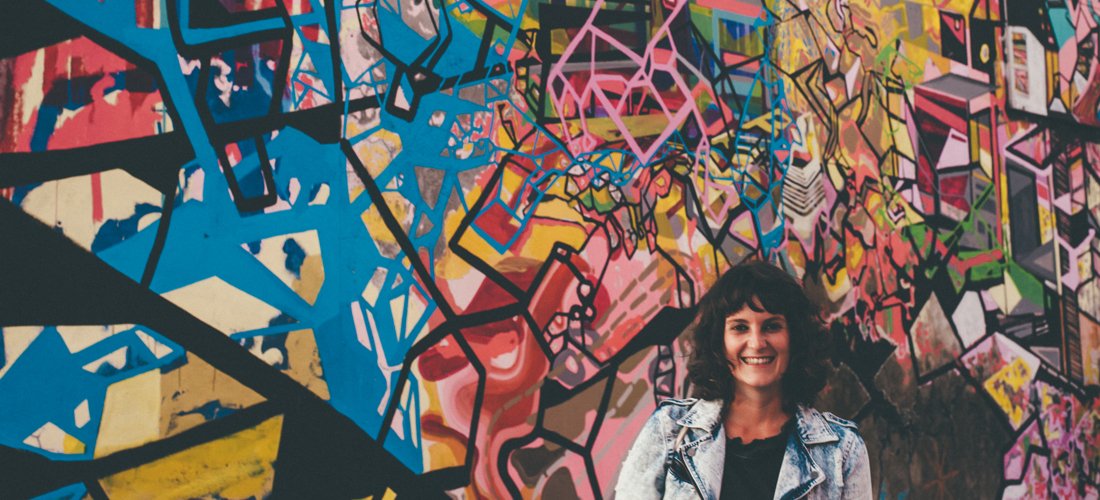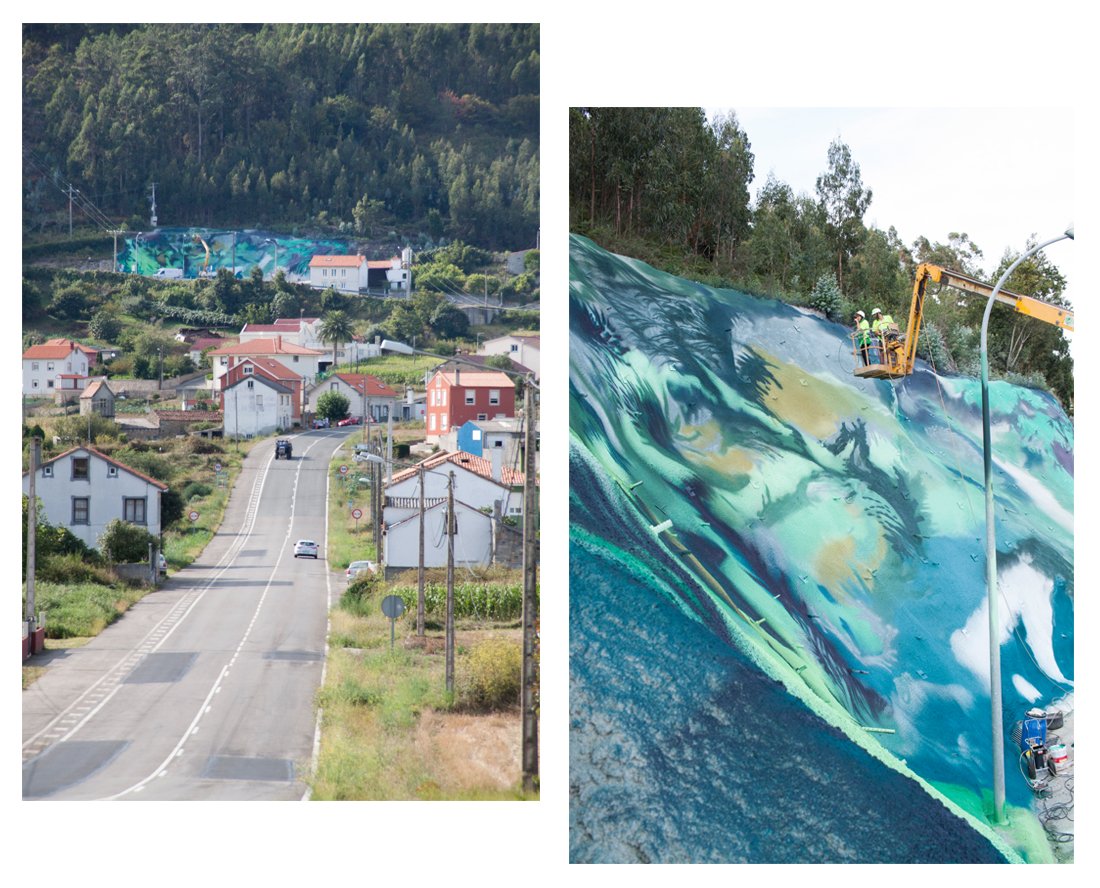Photo by Melissa Adams

Zeitgeist by Yosune Guillén – An Interview with Paula Fraile
Meet Paula Fraile and her transforming art in this interview by Yosune Guillén.
YOSUNE: How did your path towards mural street art start?
PAULA: For many years I focused my training on engraving and this made the technique prevail over the image – synthesizing ways to arrive at a purer drawing based on the search for identity through the stroke. But this road soon made me divert to something different, due to the absence of color and the search for other surfaces that would already tell me about other subtleties such as humidity, shadows, reflections, etc. Therefore, I came to mural painting, attracted by these subtleties I was forced to create images that arose from these encounters. I was finally able to unite the beauty of an engraving plate with random shapes and the color in a superior dimension.
Y: You define yourself as a nomad, in the physical and spiritual sense. In which way is this movement and knowledge of different cultures and places a source of inspiration to you?
P: Painting always taught me to get away from things to get a chance to see them better; with more perspective. I feel that each place brings me new knowledge and it makes me grow without accommodating myself. This way my painting will enrich and fill itself with energy, by collecting light from every place where I get the chance to live.
Y: Having art on the streets can be a transforming and powerful weapon, that, when used well, can not only change the aspect of a neighborhood but also the mood of the people who live in it. Are the town councils aware of this?
P: Some are aware but it takes a lot of work and financial support because, at the same time, it is a risky job that requires insurance, materials, permits, etc. And not everyone is willing to pay that.

Photos by Samuel Ortiz
Y: As an artist who moved the art onto this dimension and who worked on a crane in the streets, have you ever felt that people empathized and appreciated your work?
P: Painting while on a crane is one of the most beautiful things that has ever happened to me during my career, and in general, the reaction that people have is very surprising. They empathize, criticize, they comment… The walls come alive and the neighbors, being accomplices of the process, make the mural their own by integrating it in their imagination. It is a way of bringing art to the streets and share it with a lot more people than you would in a gallery.
Y: In your piece “The involuntary trace” you used chewing gums as an inspiration and you integrated dirt of the streets and turned it into art. It is a daringly brilliant work in its simplicity, and at the same time very complex in what it represents. What do you want to tell by altering the space with your art?
P: The urban space seems very inspiring to me since it is always in continuous movement. Art in this case can act as a mechanism to raise awareness, expand our vision, understand the environment, make the place of transit find another sense and coexist with the space, altering it and changing its own routine.

